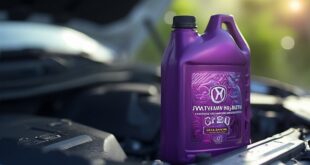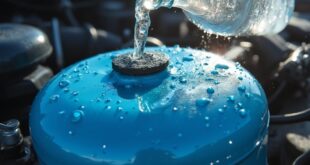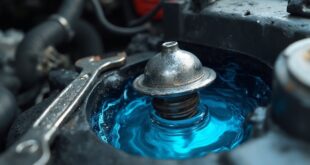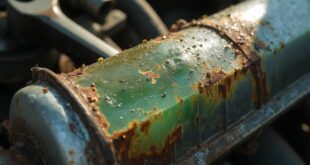If your car won't shift out of park, it could be due to a malfunctioning brake switch, increased pawl pressure from parking on a slope, or a faulty shifter interlock. Make sure you're pressing the brake pedal firmly, as that's essential for shifting. Check if your brake lights turn on; if they don't, your brake switch may need replacement. There are effective solutions to this issue, so keep exploring for more details on resolving your problem.
Common Causes for Inability to Shift Out of Park
When you find your car won't shift out of Park, several common culprits might be at play.
First, consider whether you're parked on a steep incline; this can create pressure in the transmission.
Next, a malfunctioning shifter interlock could prevent movement; check if the brake switch is working, as it's essential for the interlock to function.
If your brake lights aren't illuminating, that's a sign of a faulty switch.
In rare cases, a more serious transmission failure could be at fault, requiring professional diagnostics.
Address these issues promptly to avoid further complications with your vehicle's shifting mechanism.
Understanding Increased Pawl Pressure
If you're parked on a steep incline, you might experience increased pawl pressure, which can make shifting out of Park difficult.
This pressure occurs when the parking pawl, a small metal component, gets wedged into the parking gear due to the gravitational force acting on your vehicle. When this happens, the system jams, preventing you from shifting.
You can try rocking the vehicle back and forth to relieve some of that pressure. If that doesn't work, you may need to call for a tow.
To avoid this issue in the future, set the parking brake before shifting into Park.
The Role of a Malfunctioning Shifter Interlock
A malfunctioning shifter interlock can greatly hinder your ability to shift out of Park, especially if it fails to recognize that the brake pedal is engaged.
This safety feature prevents accidental shifts into Drive or Reverse, ensuring you only move when you're ready. If the interlock malfunctions, you might find yourself stuck, unable to shift.
You can sometimes override this system using the emergency shift lock release, often found near the shifter. Always consult your owner's manual for specifics, as the location may vary.
If you're still unable to shift, it's best to consult a mechanic for further assistance.
How Brake Switch Failure Affects Shifting
Since the brake switch is essential for the shifter interlock to function properly, any failure in this component can leave you unable to shift out of Park.
When the brake switch malfunctions, it may not signal that you've pressed the brake pedal, preventing the interlock from releasing the shifter. This means you can't move from Park to Drive or Reverse, even if you're trying to engage the brake.
To diagnose the issue, check if your brake lights work. If they don't illuminate, it's likely the brake switch needs replacement to restore proper shifting functionality.
Effective Solutions for Shifting Issues
Several effective solutions can help you shift out of Park when faced with this common issue. First, apply firm pressure on the brake pedal while attempting to shift. Next, check your brake lights to see if they're functioning, as this might indicate a brake switch problem. You can also override the shift interlock solenoid if your vehicle has that feature. If you still can't shift, consult a mechanic for assistance.
| Solution | Description | Notes |
|---|---|---|
| Apply Brake Pressure | Firmly press the brake pedal | Critical for shifting |
| Check Brake Lights | Verify they illuminate when the pedal is pressed | Indicates brake switch status |
| Override Shift Interlock | Use manual shift lock override if available | Consult your owner's manual |
Frequently Asked Questions
Can a Dead Battery Prevent Shifting Out of Park?
Yes, a dead battery can prevent shifting out of Park. Your vehicle's shifter interlock system relies on power. If the battery's dead, the system may not function, keeping you stuck in Park until you recharge or replace it.
How Can Weather Conditions Affect Shifting Issues?
Weather conditions can impact shifting issues considerably. Cold temperatures may cause fluids to thicken, while heavy rain can lead to water intrusion in electrical components, affecting your vehicle's ability to shift smoothly between gears.
What Warning Lights Indicate Transmission Problems?
When you see warning lights like the check engine light or transmission temperature light, it indicates potential transmission issues. Ignoring these signals can lead to more severe problems, so it's best to address them promptly.
Is It Safe to Drive if Stuck in Park?
If you're stuck in park, it's not safe to drive. You need to address the underlying issue first. Driving in this state can lead to further damage or create dangerous situations on the road.
How Often Should I Service My Transmission?
You should service your transmission every 30,000 to 60,000 miles, or as recommended in your vehicle's owner manual. Regular maintenance helps prevent issues, extends lifespan, and guarantees smooth shifting for peak performance. Don't neglect it!
 Car Service Land Coupons for Oil change, Tires, Wheel alignment, Brakes, Maintenance
Car Service Land Coupons for Oil change, Tires, Wheel alignment, Brakes, Maintenance




